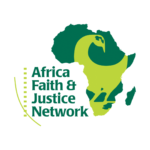(IRIN News) Health experts are concerned that southern Sudan, emerging from more than two decades of civil war, may experience a major HIV epidemic due to high numbers of refugees returning to the area. Difficulties in raising awareness and widespread education on HIV/AIDS have many worried. More than 4.5 million people fled during the civil war, with four million displaced internally and another half a million living as refugees in neighboring Uganda, Ethiopia and Kenya, all countries with a high HIV prevalence.

Sudan: War-scarred south ill-equipped to deal with HIV/AIDS
BOR, 10 April (PLUSNEWS) – Southern Sudan, slowly emerging from a 21-year civil war that left it bereft of even the most basic services, is waking up to the reality of HIV/AIDS in a population with little awareness and few prevention and care mechanisms in place.
Sheila Mangan, an HIV AIDS officer for the UN Children’s Fund (UNICEF) based in Juba, the capital of South Sudan, fears HIV infection rates could “explode” in the region as a result of low levels of awareness among the population.
“It is so hard to disseminate information when literacy levels are so low, and there is a complete lack of radio and television,” she commented. “This is a disease nobody believes they can get.”
With the return of peace to the region, cross-border trade between neighbouring Democratic Republic of Congo (DRC), Kenya and Uganda – all of which have significantly higher HIV prevalence levels than southern Sudan – has dramatically increased, and with it, the fear that HIV prevalence could spike.
Access to condoms remains severely limited in southern Sudan, and health experts are concerned that the population is ill-equipped to deal with a potential escalation in HIV prevalence rates.
A series of small studies carried out on behalf of the UN World Health Organisation (WHO) since the end of the war in January 2005 indicated the size of the challenge facing the Government of South Sudan.
The results were startling: in the town of Rumbek, 520 km northwest of Juba, fewer than four percent of adults could identify two methods of preventing HIV transmission, and only two percent said they had used a condom the last time they had sexual intercourse; in the town of Yei, less than 100 km from the Ugandan border – where a 2003 WHO report estimated the HIV prevalence rate at 2.7 percent – only one in four people had used a condom.
Across the south, traders and truck drivers from Uganda are fuelling a lucrative sex trade among the town’s tea-sellers and young destitute women – in Juba, 10 percent of tea-sellers were found to be HIV infected.
According to UNICEF’s Mangan, South Sudan’s government is slowly managing to put together an HIV strategy, despite any real financial resources being allocated to a campaign.
ABSTINENCE OR CONDOMS?
South Sudan is looking to Uganda for inspiration. Uganda’s pioneering Abstain, Be faithful, use a Condom approach – commonly known as ABC – is widely credited with bringing its prevalence rate down from over 20 percent to about six percent, but there is disagreement on whether to focus initially on abstinence or condoms.
“I propagate the policy of abstention,” said Dr Agot Alier Leek, Minister of Health in southern Sudan’s Jonglei State. “With communities like ours, that have been kept down by war, and where illiteracy is a major problem, most people have never even heard the word ‘condom’, so to propagate the use of condoms will need more time.”
Sheila Mangan disputed the idea that abstinence is the most effective tool to fight the spread of HIV in South Sudan.
“When people have no information at all you have to start with ‘how to protect’, and it would be difficult not to promote condoms,” she maintained. “Obviously ‘A’ is the only way to guarantee avoiding the disease but we can’t afford to go against cultural values and, traditionally, they [communities in southern Sudan] are sexually active before marriage, so condoms are the most appropriate message.”
BEGINNING TREATMENT
Other HIV prevention and care services are slowly taking root – South Sudan’s first voluntary counselling and testing centre (VCT) opened in Juba in March 2004. Nearly 1,000 people have been screened since then, of whom 216 were positive, according to Dr Felix Wani, a national HIV/AIDS officer.
“That should not suggest a prevalence rate of 21 percent,” he warned. “Most people who come for testing have lost either a husband or a wife, or have reason to suspect they are infected.”
The centre has also started providing antiretroviral (ARV) treatment to a limited number of patients. “Since January we have screened 80 HIV positive patients with a high viral count. Of those, 35 have been placed on ARVs,” said Wani.
WHO has three ARV treatment sites up and running in the towns of Juba, Wau and Malakal, and hopes to establish up to eight by the end of the year. “Our target is to have 200 patients receiving ARVs in Juba, Wau and Malakal by December 2006,” said WHO’s HIV AIDS programme officer for south Sudan, Dr Patrick Abok. Medecins Sans Frontieres also runs a treatment site in the southeastern town of Kajo Keji.
Abok said the WHO was looking to scale up ARV treatment in areas with potentially high HIV prevalence rates. The initial focus would be the towns of Yambio, Yei and Mundri, all located close to the borders of the DRC and Uganda.
Education programmes, too, are underway, with the UN Development Programme (UNDP) supporting an HIV/AIDS awareness campaign in The Sudan Mirror, one of the largest weeklies in the region.
Via the UNDP, South Sudan will receive US $8.8 million over a period of two years from the Global Fund for Aids, Malaria and Tuberculosis.
